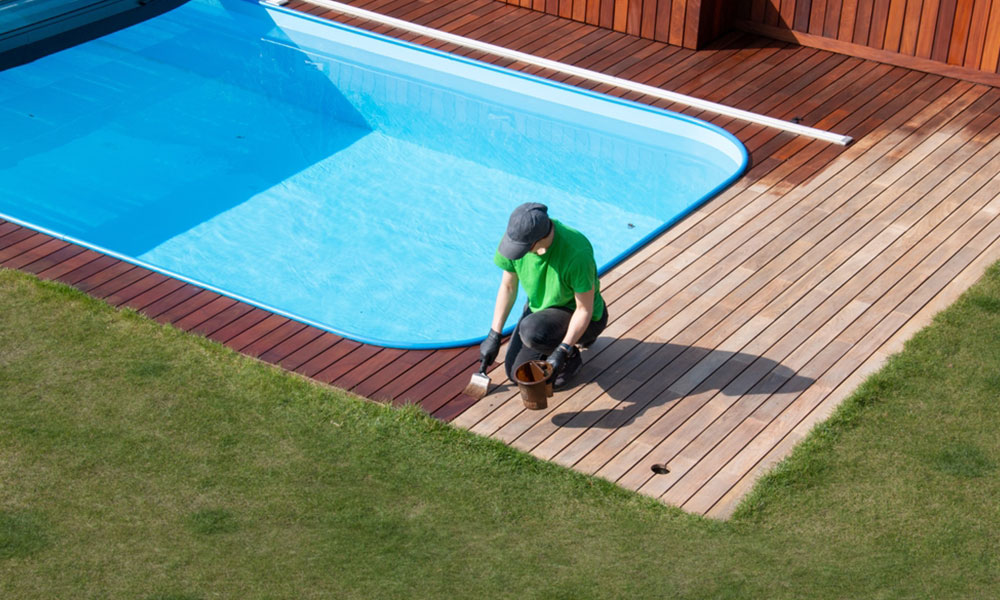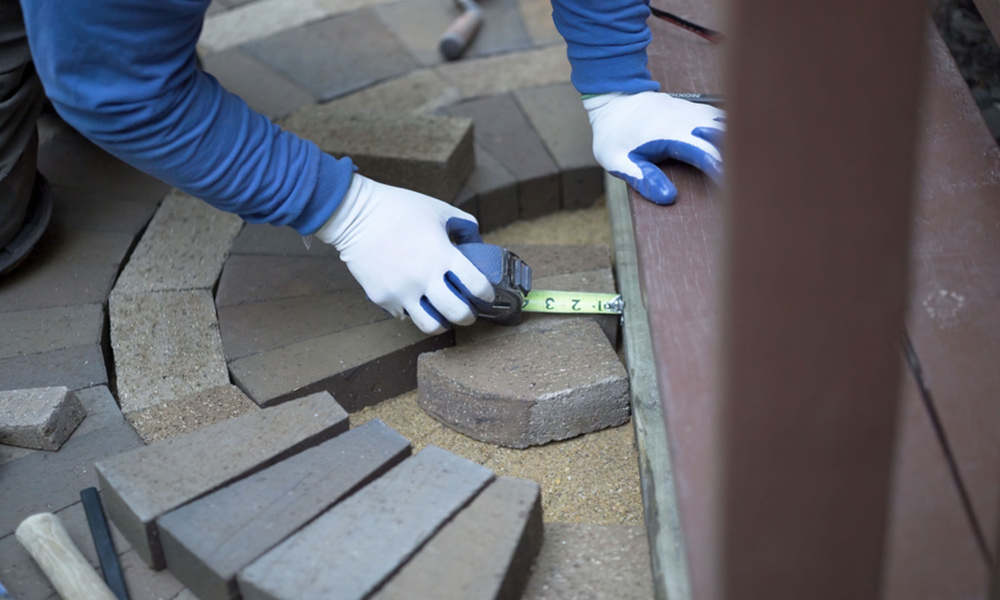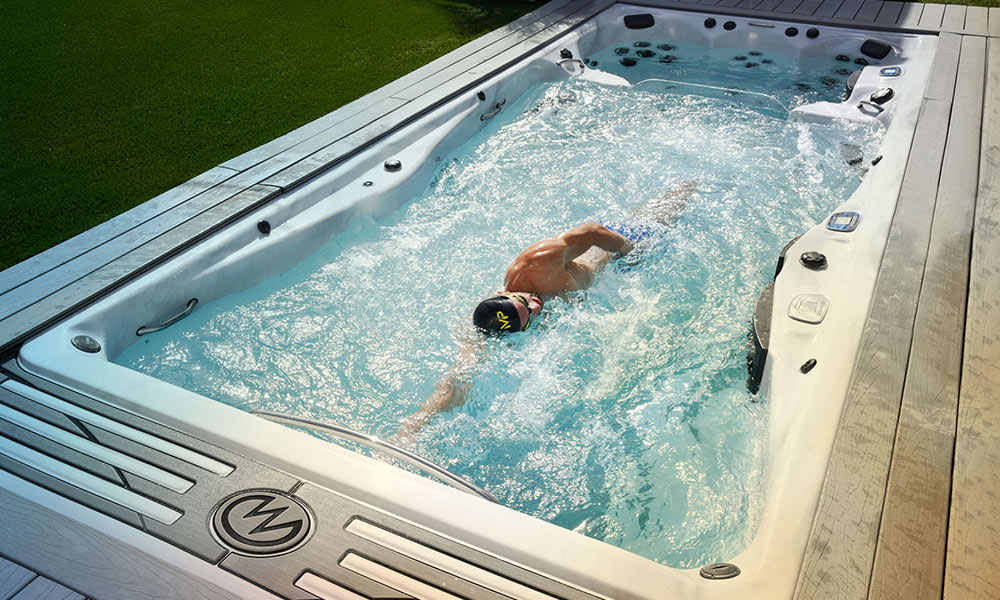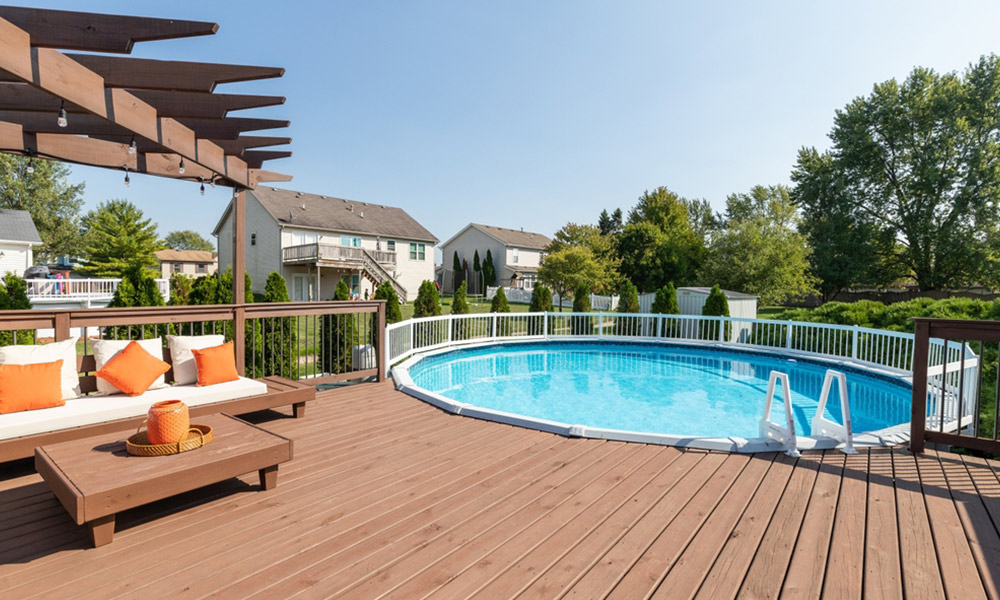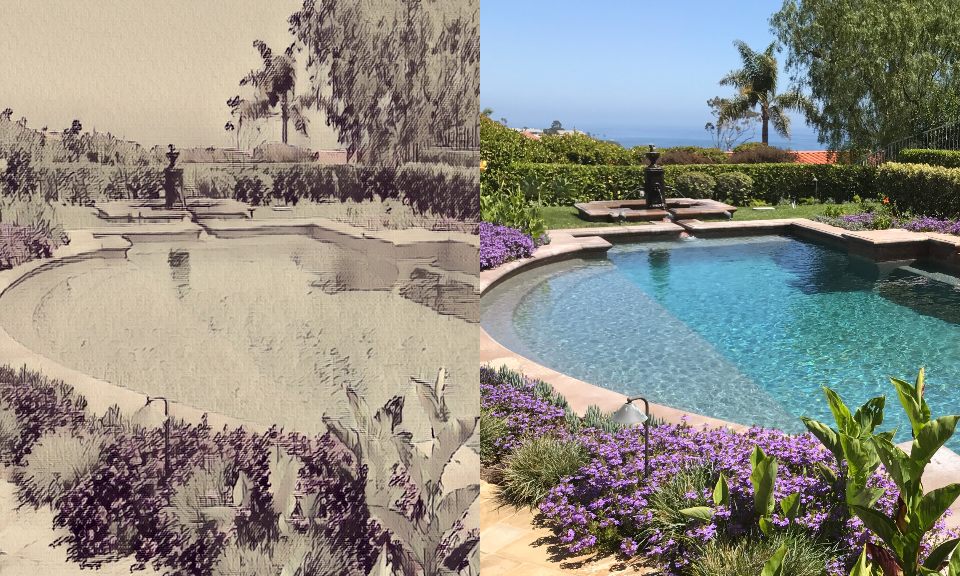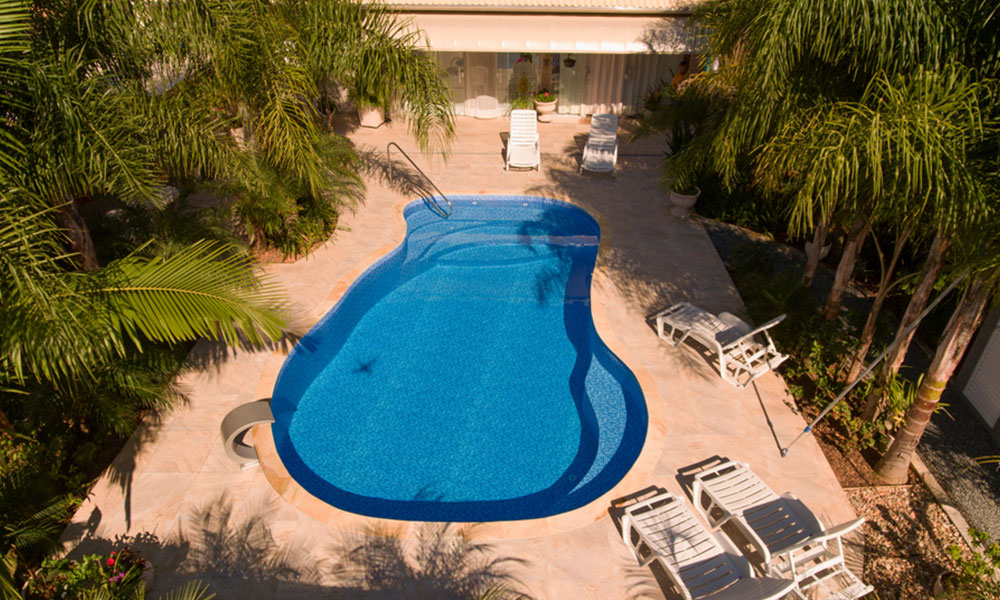Table of Contents
ToggleThere are some tried and true favorites in the world of pool design. But that doesn’t mean people aren’t trying and discovering some amazing new ideas. In fact, it’s almost certain that some of them might be in the running to become the pool of your dreams. Shipping container pools in particular have been rising in popularity. And as you read on you’ll discover exactly why that’s the case and whether they’re right for you.
What Is a Container Pool?
People usually think that there are three basic types of pools, depending on the material used within them. These are concrete, vinyl, and fiberglass. But there’s also a fourth, less well-known, option called a container pool. It’s a type that has an inherent mystery to it for a lot of people. After all, it sounds like someone’s essentially just turning a shipping container into a full pool. It’s hard to believe that container pools could be that simple. Especially when you look at the amount of work involved in the typical below-ground pool. But nope, it really is that simple. A container pool is essentially just a modified shipping container that can function as a pool. Note too that you might hear this type of pool referred to as a modular or “mod” pool.

How Much Does a Container Pool Cost?
The fact that these pools are made from shipping containers can significantly lower the total cost. And this is especially true if you go with a used rather than a new shipping container. However, while these pools are generally more affordable than a standard one, there are still going to be some additional costs. And these costs are typically associated with the various options you decide to go with.
Pool Size
The size of your container pool is going to be the main factor influencing its cost. The bigger it is the more it’s going to cost. If you’ve ever seen a shipping container then you have a good idea of what to expect from the standard model. They’re usually about eight feet wide and have a variable length. One of the big advantages is that the smallest standard model is still quite deep (8.5ft). So if you want a deeper pool then this is typically one of the better ways to get one.
The standard sizes of containers are:
- 10ft – Not overly common so will be harder to acquire, great size for a plunge pool.
- 20ft – The most common size and is a good option for a small pool.
- 40ft – A long pool that will make installation more difficult but is ideal for those wanting a larger pool or lap pool.
Pool Liner
When people see a container pool they often imagine that the inside is going to have the same feel as the outside. And that would be true if it wasn’t for pool liners. A pool liner in a container pool functions in the same way as in traditional pools. It lines the pool interior and helps to enhance its effectiveness. However, just as with traditional pools, the cost of a pool liner will dramatically impact the cost of the pool as a whole.
Foundation and Reinforcement
Water might not seem very imposing when you’re just holding a glass of it. But liquid’s surprisingly heavy in large volumes. And a pool needs to hold a considerable amount of water. So much, in fact, that a large container filled with water would make a huge impact on most surfaces it was positioned on top of. That’s why foundations and reinforcements are so important to a container pool. An installation team needs to lay down a concrete foundation for the container to rest on. Next, the container itself needs to be reinforced to ensure it can hold the full weight of the water. Afterall they are not originally made to hold liquid, whatsmore you are removing the top of the container which means less structural integrity. Once again, the larger the pool the more this process will cost.
Labor
Every step of the pool installation process requires people to actually implement it. And this labor also comes with an extra cost attached to it. This isn’t a minor concern either. As a general rule, around 30% of your initial pool cost will probably go into labor.
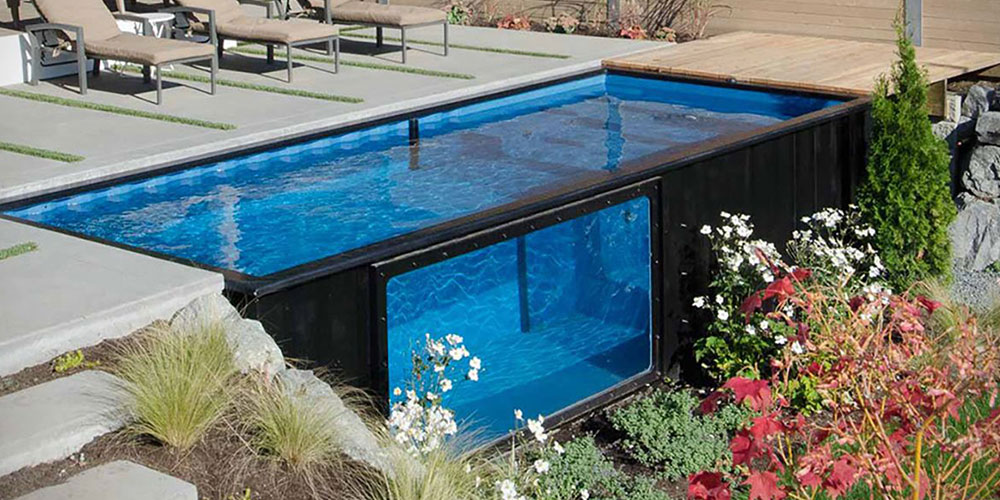
Advantages
Pools made from shipping containers are gaining in popularity for good reason. They have a lot of advantages over many of the other pool types. And while there’s a vast number of perks, the following are the main points to keep in mind when thinking about what you could gain from a container pool.
Affordability
Cost is one of the most significant advantages of a container pool. One of the most interesting aspects of shopping for a container pool is just how much you can save on the total cost of the container itself. Most people go with used containers, which come with all of the savings you’d assume. You can generally expect a price range of about 1/3rd the cost of a standard pool by going with a container pool.
Durability
Shipping containers are designed to put up with a lot of wear and tear. The contents need to be protected from snow, hail, water, and more. And that same durability holds true for container pools as well. The only caveat is that steel in the containers can rust. But zinc paint, or even a fiberglass layer, can protect against that effect.

Easy Installation
Forget the drawn-out schedules associated with standard concrete pools. Instead of timeframes lasting through months, a container pool can typically be set up within a period of days similar to what you can expect with a fiberglass pool.
Sustainability
Container pools are a superb complement to a sustainable and eco-friendly lifestyle. This is largely due to the fact that the entire pool can be seen as an exercise in recycling if you buy a used shipping container.
Portability
Pools add a lot of value to a home. But what if you could take your pool with you when you moved? You can do exactly that with a container pool. Though of course, this is mainly for container pools that are above ground rather than inground.
Disadvantages
You’ve seen some of the reasons why container pools are becoming such a hot commodity. But that’s not to say they’re perfect. There’s really no single perfect pool that’s going to be right for everyone. And container pools do have some disadvantages.
Size Limitations
Container pools aren’t custom built for the job so you’re essentially at the mercy of the company which sized them for shipping purposes. This generally means that you’re limited to a width of eight feet. That said, smaller pools have their own benefits.
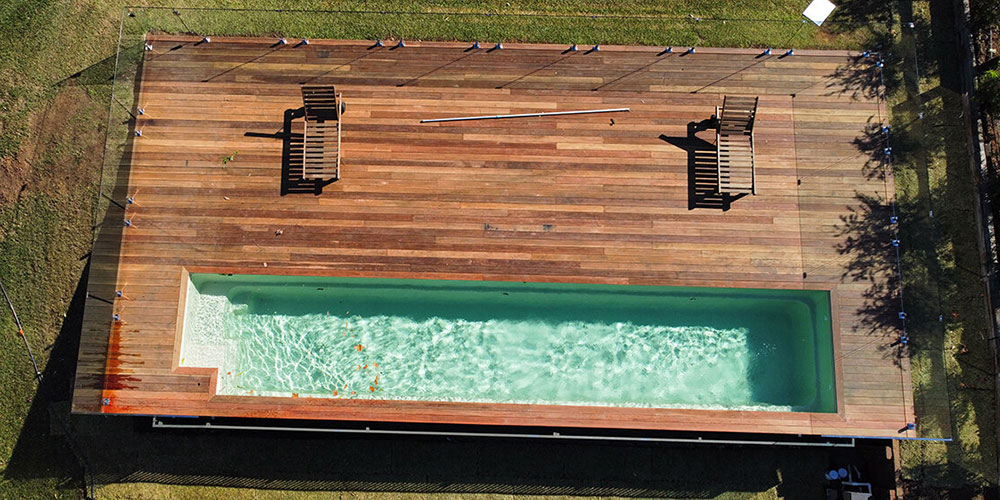
Unique Aesthetic isn’t for Everyone
A container pool looks like, well, a shipping container. And not everyone’s a fan. But there are options, such as adding a deck to the pool. When done properly people might never suspect your pool was made from a container.
Heat Transfer
Shipping containers really don’t hold their temperature very well. That means climate control in the pool is going to be a more costly endeavor if you live in a colder area. The heat tends to seep right out of the pool water through the container’s conductive material.
Vulnerable to Rust
Shipping containers are prone to rust, so filling them with water is a little risky. However, there are options to essentially remove the risk of rusting. Liners, coatings, zinc paint, and more can protect against rust.

Diving Into a New Kind of Pool
You’ve seen that there’s a lot more to pools made from shipping containers than meets the eye. There’s a lot of variety found within the larger concept. And each take on the idea has unique benefits and detriments. Talk to your chosen pool builder about their thoughts on them and if they are willing to install it as you may need to look for one who specializes in container pools.



